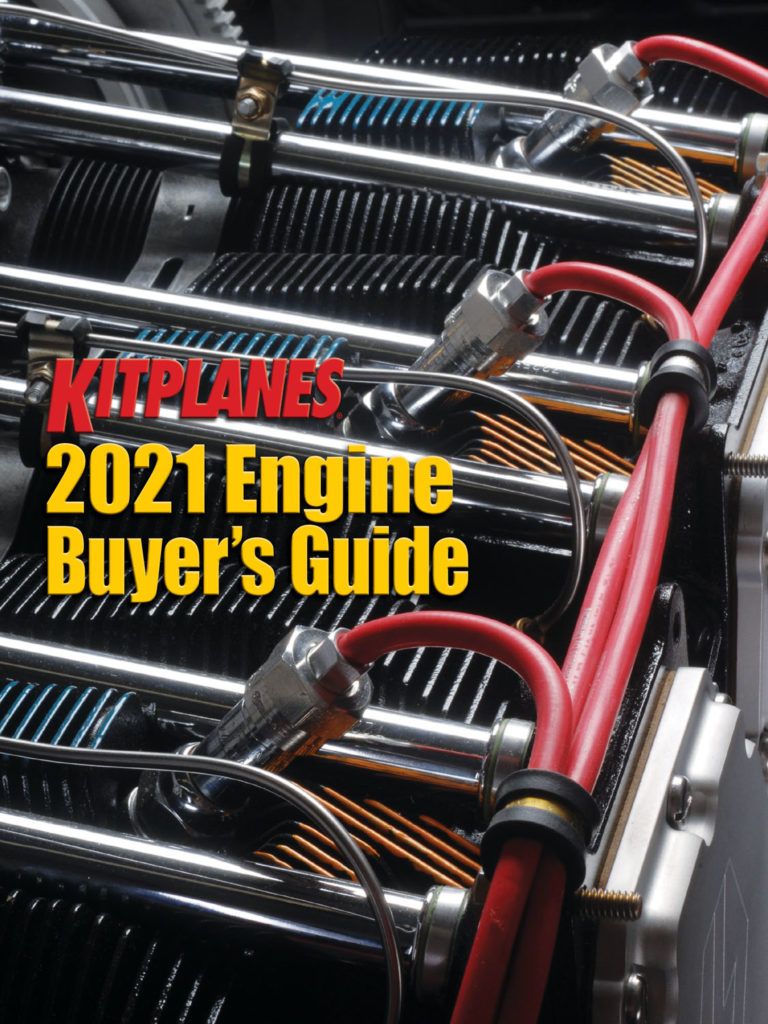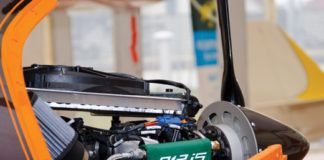While it never feels good to be stuck in the ribs, when you deserve it, it hurts even worse. That was our feeling when reader Joshua Downs took us—at least obliquely—to task on the KITPLANES® website regarding our Engine Buyer’s Guide.

With our conscience uncomfortably feeling like he was speaking for the majority, Joshua said, “I don’t think that it is very fair when engine makers proclaim outstanding performance specs, provide fabulous CAD drawings of the engines and an availability in this or that quarter of 202x, when other makers have had physical prototypes on engine stands, even mounted to a kit aircraft, only to disappear from history.”
Joshua went on to cite some examples, concluding, “Really very tired of having what only appears to be R&D projects tantalizingly dangled in front of us with looming availability dates before there’s any tangible evidence that they’ve actually flown, and certainly very tired of hearing that such engine programs will be providing engines within a year…year after year after year after…”
In our defense, the problem Joshua cites, the “promotion” of vaporware engines, is one of the stickiest issues in putting together a buyer’s guide. Obviously, we try for a complete guide; we also try to keep the dreamland stuff out. The trouble is our crystal ball is only marginally better than yours, and as Joshua pointed out, it’s the manufacturers (or potential manufacturers) that are the source of such marketing enthusiasm.
Naturally, there are a variety of reasons new engines are promoted yet fail to show. To get past the elephant in the room, yes, occasionally there are people simply fishing for development money, although we believe this is far more rare than the more cynical of us might say given a beer and a bull session.
More common are well-intentioned technical types who have an idea, and probably a good one at that, who take on the immense job of developing a new engine with little more than a few million in bus fare. After years of work they can make noise with a prototype engine, but not unsurprisingly, fail to unearth the mountains of dollars necessary to make the huge jump from prototype to production. In the meantime they have a tent in the grass at AirVenture.
And make no mistake, it takes Department of Defense type budgets to get a new engine into series production.
Then there are established companies that take a flier on something a little different. Even then, money is the issue. Typically these initiatives are handled as sidelines, the better to not sink the entire company, and so have a gestation measured in decades. At least if the original engine concept never makes it, lessons learned along the way go into bettering the company’s mainstream products.
What all of these efforts can have in common is relatively easy marketing exposure—those pretty CAD drawings and such. And the promise seems so close, closer than it turns out to be. But everyone is wanting it to work so cognitive bias reigns.
Observing this from the perimeter fence so to speak, we at the magazine find it nearly impossible to tell what’s wheat and what’s radar tinsel. After all, the guys with money start with a tent at Oshkosh, too. The process takes years, with the real action in private. Yes, we’re told things in confidence and some of that turns out to actually be true. Some of it is manipulative. So, short of saying they’re all going to fail anyway, we pretty much have to watch the movie all the way to the credits to see if they make it.
Obviously, the ambiguous nature of engine development calls for many judgment calls when putting a buyer’s guide together, and each year the editorial staff debates what to include in the guide. These annual debates pit our caution against our desire to at least inform the market that an engine is in the making, which just might give the market some say in that engine’s development.
Furthermore, the Engine Buyer’s Guide is our most speculative, shine-a-light-in-every-corner that we publish at KITPLANES®. We don’t run feature stories on long-shot engine ventures but may mention them in the guide. It lets everyone know what’s cooking, plus it’s often the only publicity a new design will get from us. A small mention may be the notice that helps a smart but lean newcomer find the help they need.
Thus, to inform the market typically wins over simply listing those engines in proven volume production. Even deciding which existing engines are legitimate and which are not is a surprisingly gray area. Sales volumes are minuscule to nearly nothing in much of the market; some engines that have been available might not sell for a few years, then come back. We’ve seen engines produced in small numbers, advertised, had a few sold and then the manufacturer lost interest. And yes, emerging companies are often aggressively opaque in what they let anyone know due to marketing or financing reasons. We do our best to sort it all out and perhaps, in the end, we ask too much of the reader to maintain their own reality equilibrium. But ultimately it is a guide and not a catalog.
And brother, your fatigue in hearing, “This year is the year” is something we share with you. Like us, you can look at the signs when culling the herd. CAD drawings mean things are still to come. Not that they won’t come, but for sure they aren’t ready to bolt on your engine mount yet. Larger companies are safer, if not safe, bets. If the story hasn’t changed in three years, they’re looking for money. Incremental improvements in proven engines are more reality than not. Radical new piston engine designs are interesting, but almost always hiding a capital defect. Industry has had over a hundred years to try everything from rotaries to sleeve valves and has settled into what works. But if they brainstorm a breakthrough, it’ll be on sale by the end of the year.












